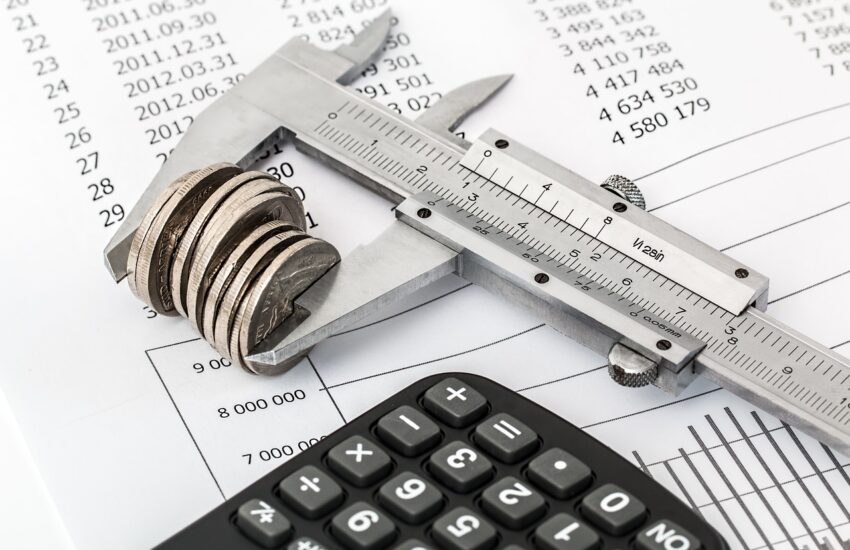As a consumer, you’ve probably wondered where prices come from. Have you asked yourself why Coca-Cola in a 1-liter bottle costs 5.59 PLN and in a two-liter bottle costs 7.99 PLN? Something doesn’t add up here, after all. In addition, why is there sometimes a “promotion” and the same bottle costs 4.99 PLN. Could it be that the price was too high before? Or perhaps now the store is not making money on the sale of this product? These are important questions, and it is worthwhile for you to learn the mechanism by which you can set the prices of your products or services.
The price of any product or service is the product of two forces. First, the cost level of your company and, second, the price level of your competitors. In this post I’ll deal with an explanation of the cost level, and in a few days you’ll read about how to check the prices of competitors.
The cost level is always the first and most important indicator of what price you should set for your products or services. Sometimes it is a very complicated issue! Have you wondered why large companies and corporations have thousands of people in accounting departments who deal with the circulation of money? They create budgets, control costs, coordinate expenses, invoice, bookkeep and so on… It is because the larger the business, the more difficult it is to grasp the circulation of money, that is, what, for how much and when it is created. In addition, the movement of money takes place over time, which causes further complications related to so-called liquidity, but I will talk about this in another blog post….
So what makes up the cost of a product or service? Costs are divided into fixed and variable costs – in such groups you need to consider them. Fixed costs are all the costs you will incur in your business just by the mere fact that you opened this company. There doesn’t have to be any business, you don’t have to sell a single product, and the fixed cost will still be there. Let’s assume that you start a company that designs and sells custom-printed T-shirts, in which you will ship the products yourself to customers. Before you sell your first T-shirt, you’ll need to have some sort of office (even if only your room), a computer, a graphics program, perhaps your first unprinted T-shirts. Such an investment already creates a certain cost before you start your business, but it is not a fixed cost. The fixed cost will be when you have to pay electricity, the accounting office, Social Security and your phone from the first day of business. Let’s assume that on average it will be PLN 2,000 per month. This will be the monthly fixed cost, which we will divide in a moment by the planned number of shirts sold.
The variable cost will come directly from the production of each T-shirt – the cost of the T-shirt, the printing service and… your work on the author’s print design. One T-shirt will cost you 20 PLN, printing at a garment decoration printer will cost you 10 PLN per piece, and your design preparation time is 1 hour. Here the question arises – how much do you want to earn for this hour of work? Let’s assume, 50 PLN. So the variable cost of preparing an author’s T-shirt is 80 PLN. A lot, right? This is because you have included your salary in the variable cost. Why you should do so and how you can approach this issue differently, I will tell you in a separate post.
Now we need to calculate the fixed cost per unit. We need to make some assumptions, for each business they may be different. For example, after discerning the market, you came to the conclusion that on average you can sell 100 T-shirts per month. You are able to do this – you will spend 100 hours on design, and the rest of your time will be spent on running the business, shipping shirts, customer service, etc. The fixed cost per unit that you need to add to the variable cost is 2000/100=20 PLN. So the price of a T-shirt should be: variable cost 80 PLN and fixed unit cost 20 PLN equals 100 PLN. This is a lot, but you have assumed that the T-shirts will be authoritative and unique. In addition, included in the price of the T-shirt is your salary – when you sell 100 T-shirts, you will earn a total of 5,000 PLN already after subtracting all costs.
If you think the price is too high, you can only reduce your remuneration, because other costs have virtually no downward adjustment. If this is still not a good solution, perhaps the business of designing custom T-shirts is not profitable? Then you can look for another business idea.
Remember – the conclusion that something doesn’t pay off is just as good as the conclusion that it does.
In my next post, I’ll describe how to take into account the prices of products that competitors offer when setting your price.

